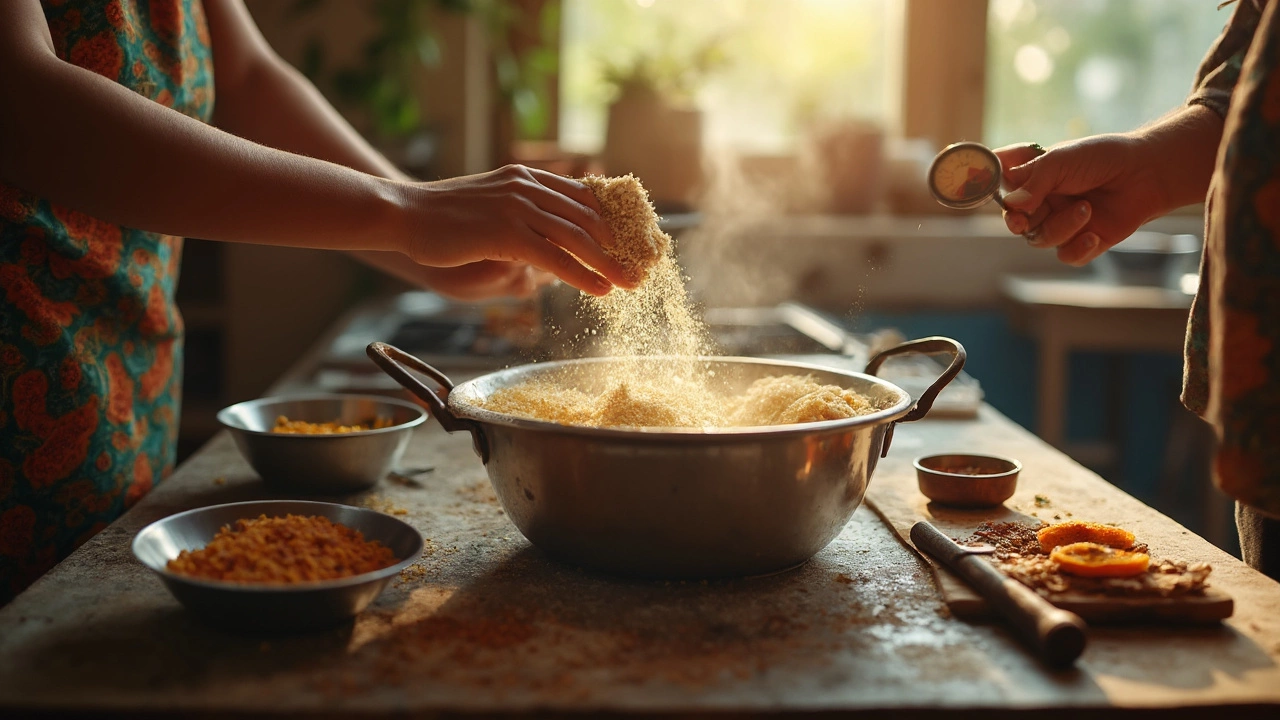Idli Without Yeast: Simple, Fluffy South Indian Breakfast
When working with idli without yeast, a steamed rice‑lentil cake made without commercial yeast. Also known as yeast‑free idli, it relies on natural processes rather than packaged leavening. The key to success is a well‑balanced idli batter, a blend of soaked rice and urad dal ground to a smooth paste that undergoes natural fermentation, the activity of wild bacteria that creates carbon dioxide and a slight tang. This trio—batters, fermentation, and steaming—forms the backbone of every yeast‑free idli you’ll cook.
Why Go Yeast‑Free?
Many cooks think you need yeast to get that airy texture, but the microbes living on rice and lentils do the job for free. When the batter sits at room temperature, Lactobacillus and yeast strains from the environment multiply, producing gases that puff the batter. If you’re short on time, a pinch of baking soda can give a quick lift, but the flavor profile shifts toward a mild, soda‑y taste. By embracing true fermentation, you keep the classic sour note that makes idli so refreshing in the morning.
Temperature matters a lot. A warm kitchen (around 30‑35 °C or 86‑95 °F) speeds up microbial activity, while a cooler spot slows it down. That’s why many South Indian homes place the batter in a sunny window or on top of the stove. You’ll notice the batter rising by about a third to half its original volume; that’s the visual cue you need before steaming.
The cooking method is simple yet crucial. Steaming, cooking the batter over gentle boiling water without direct heat preserves the delicate crumb and locks in moisture. Unlike frying, steaming doesn’t dry the exterior, so each idli stays soft and pillowy. Using a tight‑fitting lid prevents steam from escaping, ensuring even rise across all the molds.
In the wider culinary picture, idli belongs to South Indian cuisine, the food tradition of states like Tamil Nadu, Karnataka, Kerala and Andhra Pradesh. It’s a staple breakfast, often paired with coconut chutney, sambar, or a simple drizzle of ghee. Knowing where idli fits helps you choose accompaniments that complement its mild flavor. For instance, a tangy tomato chutney brightens the palate, while a buttery ghee finish adds richness.
If you’re after idli without yeast, these tips will get you there: soak rice and urad dal for at least four hours, grind to a smooth batter, let it ferment for 8‑12 hours, then steam in a pre‑heated idli stand for 10‑12 minutes. The result is a light, fluffy cake that can carry any topping you like. Below you’ll find a curated list of articles that dive deeper into each step, offer shortcuts, and share variations using different grains or added veggies. Happy cooking, and enjoy the simple pleasure of yeast‑free idli!

How to Quickly Ferment Idli Batter Without Yeast
Fermenting idli batter without yeast is a common challenge for many home cooks. This article breaks down simple and effective methods to speed up the fermentation process naturally. Learn how temperature, ingredients, and storage play key roles in achieving the perfect batter. Perfect for those in a rush, these tips will help you enjoy soft, fluffy idlis without the wait. Embrace new techniques while staying true to traditional culinary roots.